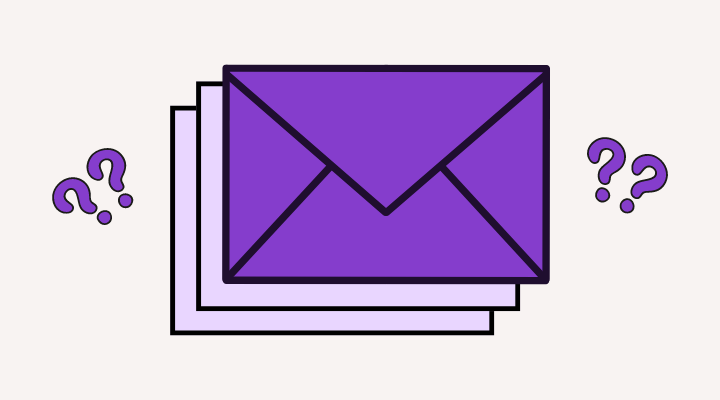Every day, consumers are bombarded with countless messages—from SMS, Viber, and Email offers that promise unique benefits and irresistible deals.
The question that arises is: When do these messages become "too much"?
How can you communicate with your customers without being intrusive?
In this article, we will explore the correct communication frequency to keep your customers engaged without wearing them out.
Why does frequency matter?
The frequency with which you send messages is vital for keeping your audience engaged and boosting your sales. Sending too many emails risks tiring out your customers, causing them to unsubscribe from your list. On the other hand, sending too few may result in losing touch and their attention. The key is to find the right balance: send enough messages to stay present, but not so many that you become annoying.
Imagine the following scenario:
You’ve purchased a pair of athletic shoes from an online store. In the days that follow, you start receiving daily messages from the same company—offers for clothes, new collections, reminders of your recent purchase, and even tips on how to pair your shoes with other products. At first, you may appreciate the attention, but after a few days, you feel like your inbox is flooded. The messages become tiresome, and you start ignoring them, until eventually, you consider unsubscribing.
Now, imagine if the same store sent you a thank-you message for your purchase, followed by an update on a special offer for accessories that match your new shoes. A few weeks later, you receive a message with care tips for your athletic shoes, and then a notice about a discount campaign coming up next month.
Much better, right?
The right approach is to send targeted messages only when there's a reason and always with content that genuinely interests the customer. Instead of flooding their inbox with every possible offer, focus on what's useful to them and what will make them want to open your messages.
How does frequency affect different communication channels?
Email: Email is one of the most powerful channels for corporate communication, but sending too many emails can tire out your audience. Research shows that sending more than five emails a week can start to decrease effectiveness, with the ideal frequency being one or two emails per week.
SMS: SMS is an even more sensitive medium in terms of frequency. Most consumers expect to receive SMS only for important or urgent offers. More than two messages per week may be considered excessive, as SMS is seen as a more personal form of communication.
Viber: Viber offers more flexibility, but there is still a risk of overuse. You can send messages several times a week, but avoid sending multiple messages on the same day unless there’s a special occasion (like Black Friday) or an urgent event (like flash sales).
Tip: What are the best days and times to send your communications?
Factors that influence message frequency
Industry: Each industry has different standards regarding message frequency. For example, e-shops, particularly in the fashion or technology sectors, may send promotional messages more frequently due to fast inventory changes or discounts. In contrast, industries like accounting services send fewer, more specialized messages.
Audience Behavior: Your audience's preferences should guide your strategy. Analyze open rates, unsubscribe rates, and engagement to see how your audience reacts to different sending frequencies. Experiment with frequency to identify the optimal rate your audience prefers.
Tip: Segment your audience based on their preferences and behavior to adjust message frequency. For example, your most active customers might be open to more frequent messages, while less engaged ones might prefer more sporadic communication.
Valuable Content: When every message you send offers real value—whether it's an exclusive discount or practical advice—your audience will be more receptive to a higher frequency. However, if your messages are repetitive or irrelevant, they will annoy the recipients.

Are you sending too many messages?
Here are some signs that you might be over-communicating with your customers:
1. Increase in unsubscribes: If you notice a sudden rise in unsubscribes, it usually means your customers are tired of frequent messages.
2. Decreased engagement: If your open rates or clicks start to drop, it’s likely a sign that recipients are ignoring your messages due to their frequency.
3. Spam reports: If your messages are being marked as spam, this is a serious red flag that you need to reduce your sending frequency.
Best practices for finding the ideal message frequency
Test and learn: Experiment with different sending frequencies to see what works best for your audience. Every business is unique, so you need to tailor your strategy to your audience's preferences.
Offer options: Allow your subscribers to choose the communication frequency they prefer. This reduces the chances of overwhelming your audience.
Add value to your messages: Keep your communications interesting. Customers appreciate offers, but they don’t want to receive repetitive or irrelevant messages.
Personalization: Instead of sending the same message to everyone, segment your audience and personalize the content to make it more relevant for each recipient.
Choose the right channels: Consider the medium you’re using. For example, with Viber, you can send messages more frequently, but daily SMS or emails might be considered too much.
There is no magic number for how many messages are too many. The key is to find the balance that suits your audience and your business goals.


